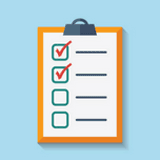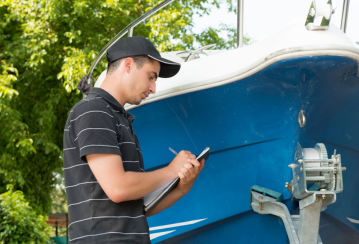News and Updates
Plan for a great boating season
Are you among the millions of Canadians itching to get their personal watercraft out of winter storage and back onto the water? With almost 9 percent of our land mass covered in fresh water, Canada has boating opportunities in every province and territory1. From canoes to sailboats to luxury yachts, safety should be top of mind no matter how or where you set sail. Having a spring routine, including inspecting, repairing, and cleaning your watercraft, can reduce risk when on the water. Here are some tips to help you make the most of the boating season – not to mention keep everyone on board safe during your adventures.
Prepare for the season ahead
-
If you haven’t already, take a boating safety course to brush up on safe boating practices and how to avoid potential dangers.
-
Review your owner’s manual to familiarize (or re-familiarize) yourself with your watercraft’s features, maintenance guidelines, and safety precautions.
Complete your pre-departure checklists
Whether you own, rent, or borrow a watercraft, you should go over the following items before setting out on the water. Operating a watercraft that you know is not seaworthy is a criminal offence. Your watercraft, its engine and its equipment must be adequately maintained and in good working order.
Watercraft condition
-
Check the hull for cracks or other damage.
-
Check the electrical, fuel, propulsion, and cooling systems.
-
Make sure the throttle and steering work properly.
-
Check the oil and fuel levels – a surprising number of watercrafts are stranded each year for running out of fuel. A good rule of thumb for fuel is one-third to go, one-third to return, and one-third for reserve.
-
Check all hoses and lines for leaks and cracks and replace them if necessary.
-
Make sure all clamps and belts are secure and in good shape.
-
Inspect, clean, and replace the spark plugs, if necessary.
-
Check and change the oil and water filters, if necessary.
-
Check the battery’s charge.
-
Make sure the drainage plug is in place.
-
Make sure that the load on your watercraft (gear and people) is well-distributed and does not exceed the carrying capacity.
Safety equipment
-
Are there enough lifejackets or personal floatation devices (PFDs) of appropriate size for each person on board? Make sure they are in good condition (check the zippers, buckles, fabric, seams, etc.).
-
Is your VHF radio in working order?
-
Do you have a first aid kit, basic tools, and spare parts?
Safety preparedness
-
Do you have maps, charts, and a compass?
-
Have you checked the weather forecast?
-
Are you aware of local hazards or boating restrictions?
-
Have you filed a trip plan to let a trusted individual know where you are going, when to expect you back, and what your boat looks like?
-
Have you briefed your guests about where you keep the communication and safety equipment and how to use it?
For more information on safe recreational boating, contact the Office of Boating Safety or refer to the Transport Canada Safe Boating Guide.
Request a Pleasure Craft Courtesy Check
Transport Canada works with various boating safety organizations, like the Canadian Power and Sail Squadrons, to offer free courtesy checks for boats that ensure you are prepared before going out on the water. A trained boating safety volunteer will examine your watercraft and safety equipment, identify any problems, and discuss safety issues with you. There are never any penalties involved, so it is a great learning opportunity to help you avoid fines and receive a Safety Inspection Sticker if your watercraft passes.
The days may be warmer, but the water is still very cold
Keep in mind that a minor boating accident can quickly turn into a tragedy this time of year. Research has shown that cold water immersion is a severe life risk if you are not wearing a floatation device, regardless of boating experience, proximity to shore, and swimming ability2. A sudden fall into cold water can seriously affect your breathing, nerves, and muscle strength, so a lifejacket or PFD is your best defence against hypothermia as they give you thermal protection and keep you buoyant2. In Canada, most recreational boater deaths occur because of not wearing floatation devices correctly or at all2.
Protect yourself and your watercraft
Before your watercraft is ready for its first voyage of the season, make sure you have the right insurance coverage in place. To review your current OTIP watercraft policy, call 1-800-267-6847. If you are shopping for a new policy or for any other leisure products, including RVs, trailers, and motorcycles, call 1-833-494-0085 to get a quote and receive a $20 gift card of your choice!







